Blog Home
Say Cheese! The much anticipated Wallace and Gromit 50p
In 2019, the eccentric inventor and his trusted canine friend made their way back from the moon and onto a UK 50p to celebrate 30 years since their debut film, A Grand Day Out.
After weeks of anticipation, The Royal Mint finally released the first ever Wallace and Gromit 50p to celebrate 30 cracking years of the British Comedy duo.

Originally a small concept in Nick Park’s student sketchbook, Wallace and Gromit have become instantly recognisable stars of the silver screen!
The pair now feature in 4 stop-motion animation short films: A Grand Day Out (1989), The Wrong Trousers (1993), A Close Shave (1995), A matter of Loaf a Death (2008) and two full-length feature films, The Curse of the Were-Rabbit (2005) and Vengeance Most Fowl (2024).
An original Nick Park design
Excitingly, the reverse of this 50p was designed by none other than Nick Park himself!
The original artist behind the popular animation characters, Nick’s artwork created a truly authentic design for the coin, featuring Wallace and Gromit peering out of the spaceship they took to the moon in A Grand Day Out.
What’s more, the initials ‘NP’ have been struck onto the design to confirm the design by Nick Park.
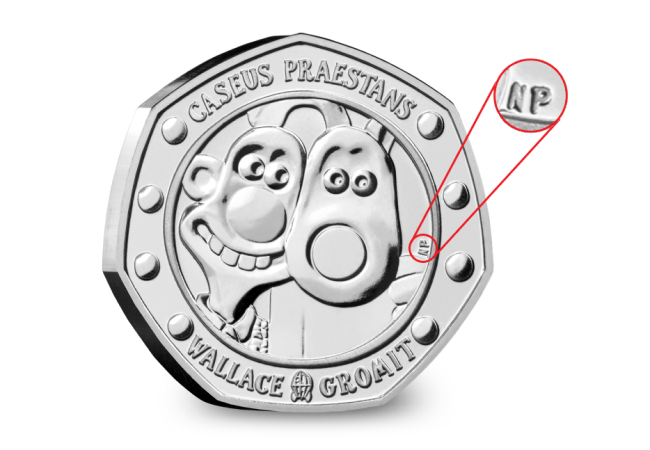
A Latin Twist
From their first appearance in 1989 to their dedicated following today, Wallace and Gromit have become international cultural icons and a real staple of British-ness!
However, the design on this coin embraces Latin to include the inscription ‘CASEUS PRAESTANS’, which translates to ‘cracking cheese’, a nod to Wallace’s iconic catchphrase.

Which Wallace and Gromit story is your favourite? Let us know in the comments!
The coins born from war and ice…
During its lifetime, The Royal Mint has struck coins for over 100 different countries from around the globe.
But do you know the story of how they came to strike Icelandic coinage?

The ‘inauguration’ of Iceland’s coinage
The story of how The Royal Mint came to strike Iceland’s coins began in World War Two.
After a night where the windows and roofs of The Royal Mint at Tower Hill had been destroyed by enemy action, the very first British-struck Icelandic coins were born as “a glacial wind whirled round the coining presses to inaugurate this coinage of Iceland” (explained by John Craig, The Deputy Master of The Royal Mint, in his annual report).
Prior to World War II, Iceland was ruled by the Danish crown and Icelandic coins had been struck by The Copenhagen Mint.
But the fall of Denmark into enemy hands during the war meant that Iceland had to look elsewhere for its coinage requirements…
First ever British-struck Icelandic coins
It was in 1940 that The Royal Mint received its first order to strike the five Icelandic denominations from 1 Eyrir (0.01 Krόnur) to 25 Aurar (0.25 Krόnur).
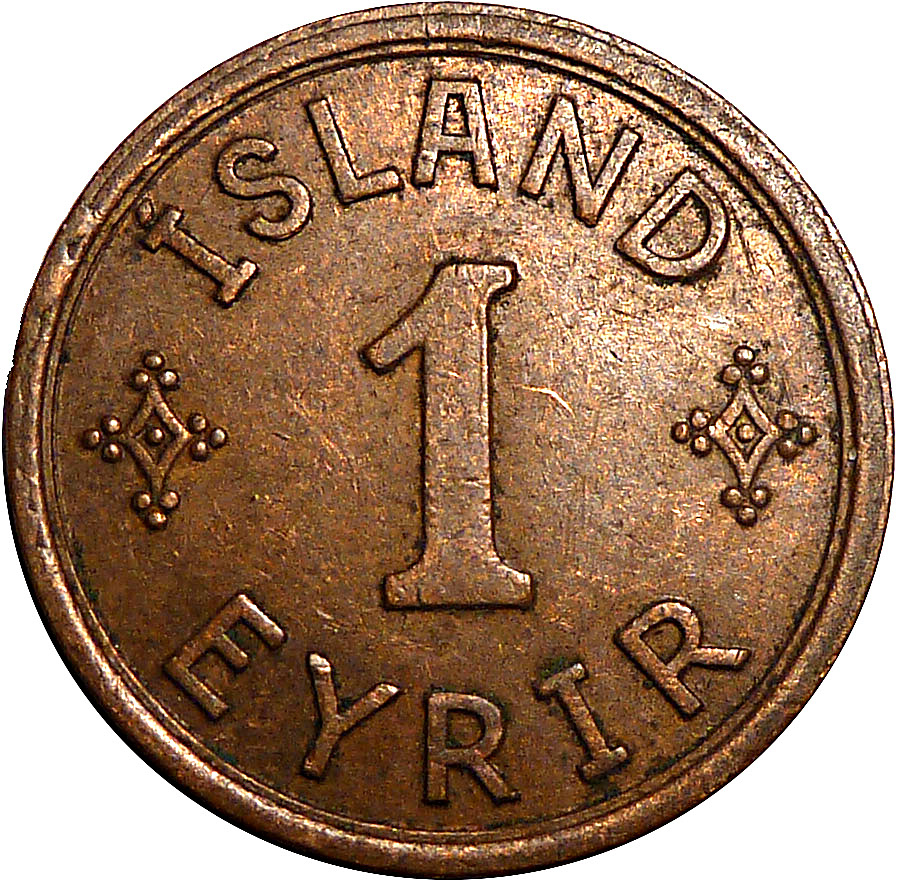
This was soon followed by additional orders for Krόnur and 2 Krόnur coins.
Not only did The Royal Mint experience damages to the building during WWII, but the price of nickel also rose substantially as the metal was in extremely high demand for munitions.
This meant it became necessary to strike the 1942 dated 10 and 25 Icelandic Aurar coins in the ‘poor metal’ of zinc rather than the now commonly used Cupro-nickel.
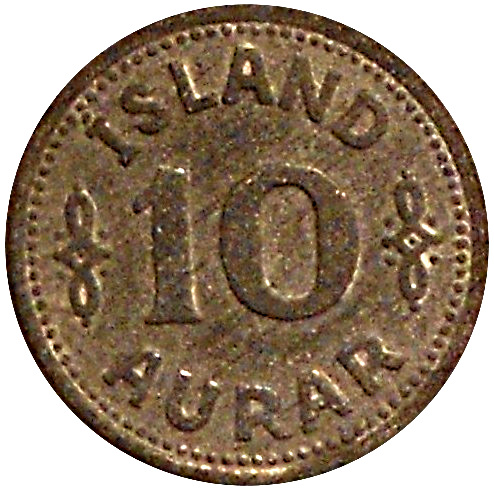
The new coins series
In June 1944 Iceland became a republic. A new series of coins were introduced in 1946, which remained in use for the next 35 years.
A full rendering of the national Coat of Arms appeared on the Krόnur and 2 Krόnur, complete with the bull, eagle, dragon and giant supporters.
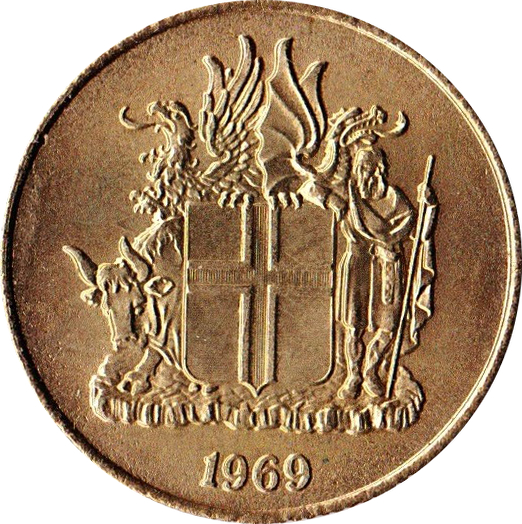
Four new denominations were added in the late 1960s, including the 50 Aurar, 5 Krόnur, 10 Krόnur and 50 Krόnur.
Iceland’s first commemorative coins
Iceland’s first commemorative coin was struck at The Royal Mint in 1961 – a gold 500 Krόnur marking the 150th anniversary of the birth of the scholar and statements, Jόn Sigurdsson.
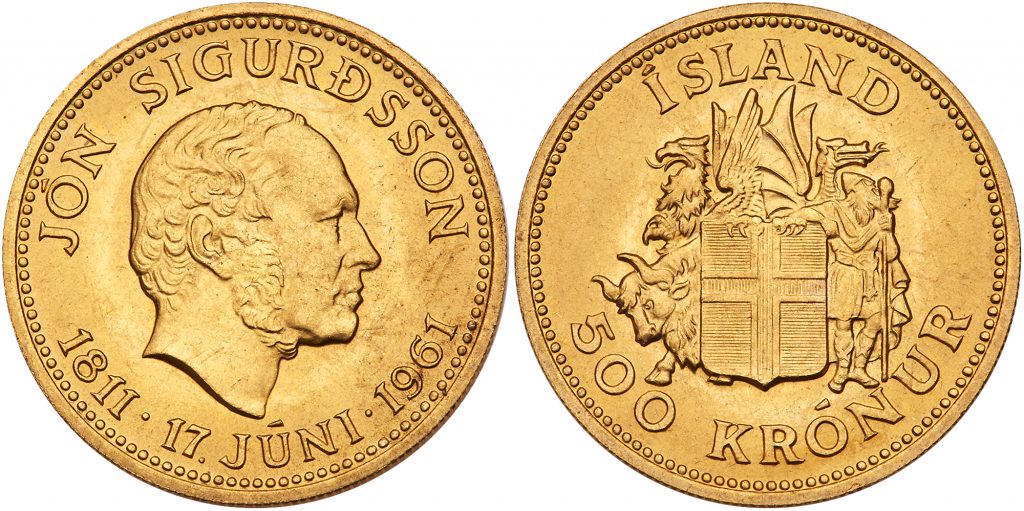
Iceland became a free and sovereign nation in 1918 when the Union Treaty with Denmark came into effect on the 1st December. To commemorate 50 years since this historic moment, a 50 Krόnur coin was issued.
In its first year of issue in 1968, the reverse design of the 50 Krόnur included a representation of the Althing (Parliament) building and carried an inscription marking the 50th anniversary of the achievement of Icelandic national sovereignty.

In 1974, The Royal Mint issued a three coin series of gold and silver coins, designed by Throstur Magnusson to commemorate the 1100th anniversary of the settlement of Iceland.
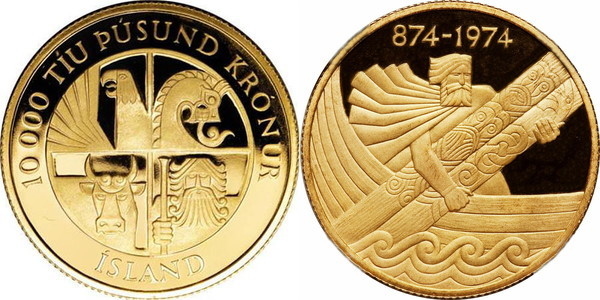
A major reform to Iceland’s coinage
The Icelandic financial market suffered hyperinflation in 1981, which was settled by a major reform of the coinage, resulting in a complete redesign and revaluation of the circulating coins.
100 old Krόnur was now worth just 1 new Krόna. As well as 1 and 5 Krόna coins, denominations of 5, 10 and 50 Aurar were also introduced.
The new obverses, in keeping with Magnusson’s designs, depicted the traditional protector spirits (“Landvættir”) of Iceland.

Each reverse portrays a variety of aquatic life, including dolphins, cod and northern shrimp.
As Iceland’s economy has been founded on fishing for so long, the pungent smell of fish smelting came to be known as “money smell”.
It’s great to discover more about different coins from around the world, and I’m sure you’ll agree that the stories behind Icelandic coinage are really fascinating.
If you’re lucky enough to have come across any Icelandic coins during your trips abroad, let us know in the comments below.
If you’re interested in coin collecting, our Change Checker web app is completely free to use and allows users to:
– Find and identify the coins in their pocket
– Collect and track the coins they have
– Swap their spare coins with other Change Checkers

Sign up today at: www.changechecker.org/app
The 2019 Gruffalo and Mouse 50p
Have you heard the story about the mouse who took a walk in the deep dark wood and ended up on a Gruffalo® 50p coin?
Following on from the original 2019 Gruffalo 50p, the second coin to feature the monstrous character also includes the wonderfully cunning Mouse from Julia Donaldson’s book.
This mouse might be small in stature, but the Gruffalo and Mouse 50p coin beautifully captures the full details of the brave little character from the nation’s favourite bedtime story.
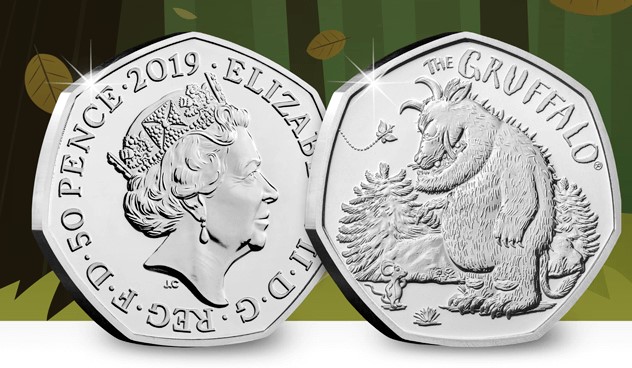
The reverse of the coin was created by Magic Light Pictures, who also designed the first coin, released in February 2019.
Since The Royal Mint announced a second Gruffalo coin, collectors were were wondering what might feature on the new coin – from the fox to the owl and all the creatures that live in the deep dark wood.
But I’m sure you’ll agree that the choice to feature the Mouse resulted in a fantastic coin designed to illustrate the classic story of The Gruffalo.

In recent years, 50ps themed around children’s literature have inspired a whole new generation of collectors, with new coin releases appealing to families, youngsters and fans of books, as well as traditional collectors.
The Gruffalo is no exception, and the release of the first coin at the start of 2019 sparked huge excitement across the UK.
So much so in fact, that the Silver Proof version of the coin SOLD OUT at The Royal Mint in just a few hours!
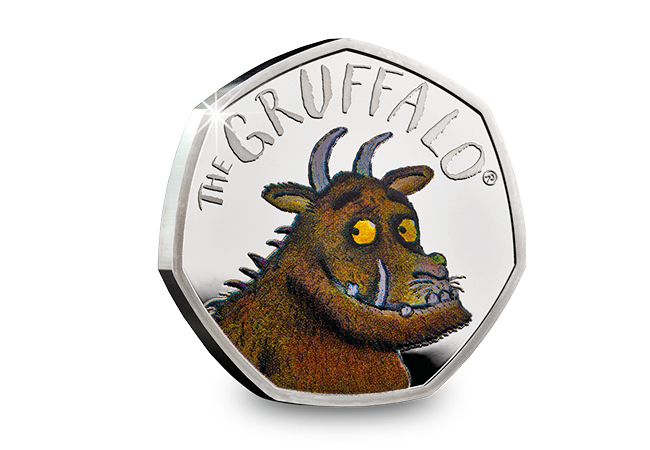
With over 13.5 million copies of The Gruffalo sold worldwide, the collectability of this coin is undeniable and I’m sure that collectors will be keen to get their claws on this one (warts and all!)



